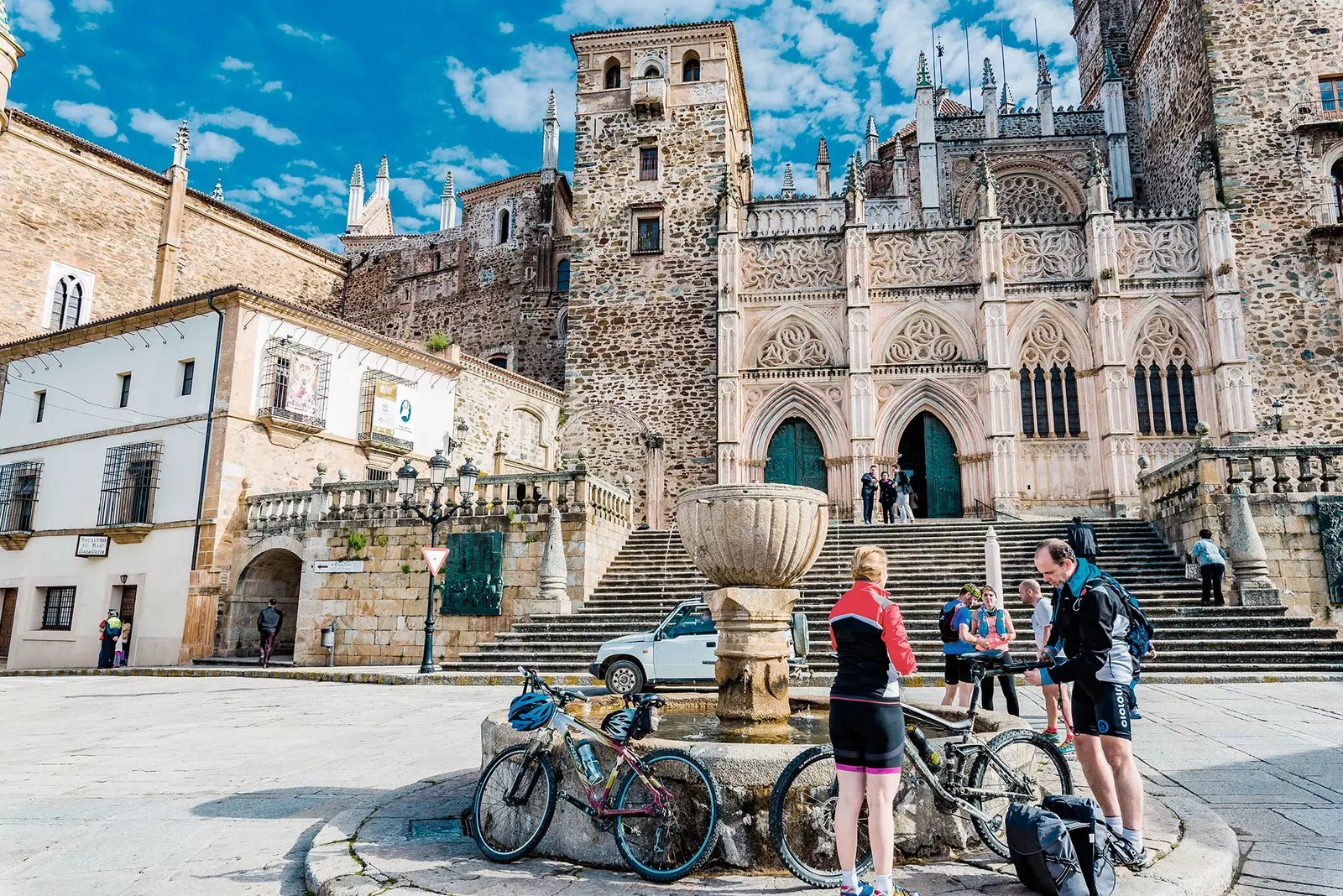
The Royal Monastery of Santa María de Guadalupe has been standing since the 14th century
Since the Royal Monastery of Santa Maria de Guadalupe was erected in this town of Cáceres back in the 14th century, have been countless pilgrims who have come to their doors, whether for spiritual or sporting reasons. From religious personalities like San Pedro de Alcántara, Santa Teresa de Jesús or San Francisco de Borja even historical figures like Christopher Columbus or Miguel de Cervantes.
The itinerary project 1337, made up of seventeen local action groups, has managed to recover twelve of the routes that lead to it from various points of the peninsula such as Madrid, Toledo, Cáceres or Plasencia, thus creating the Network of Roads of Guadalupe, Ideal for both walking and cycling. A way to value eco-cultural corridors, territorial planning axes and motors for the development of rural regions that connect
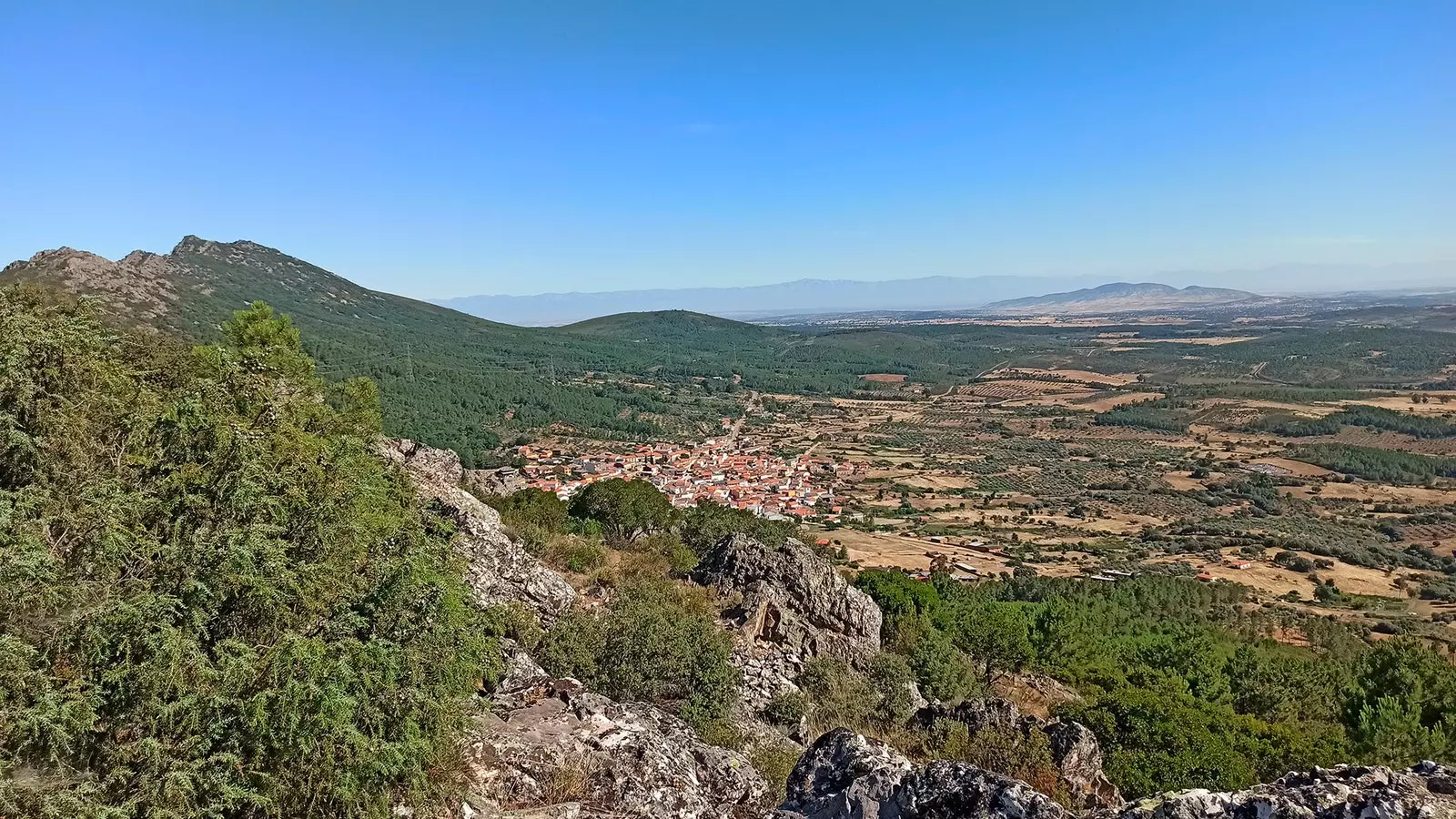
Our adventure starts from Puerto de San Vicente
We are about to walk the last stage of the Path of the Montes de Toledo, heir to the road that linked the old Toletum (Toledo) with Emérita Augusta (Mérida) along with another secondary road that ran from Caesarbriga (Talavera de la Reina) to Puerto de San Vicente.
It is precisely in Port of Saint Vincent from where our adventure starts. Natural border between the provinces of Toledo and Cáceres, this port of the Sierra de Altamira gained importance along with the hermitage dedicated to San Vicente, la Venta, the military road and the cattle road as the pilgrimage to the Monastery increased, giving rise to this population of Toledo during the Middle Ages.
The pilgrimage of the Virgin of Guadalupe is celebrated on September 8, day of the patronal festival, so around this date is when we will find more companions along the way. Although it can be done at any time of the year, as long as the weather is good.
The path has a total of 34 kilometers along the EX-102 highway (about 6 hours discounting stops), but we will save a few by taking some shortcuts. we will do it at night (if the full moon accompanies us, much better), so it is convenient bring flashlight and reflective clothing besides, of course, sports shoes and food, water and warm clothes in our backpacks.
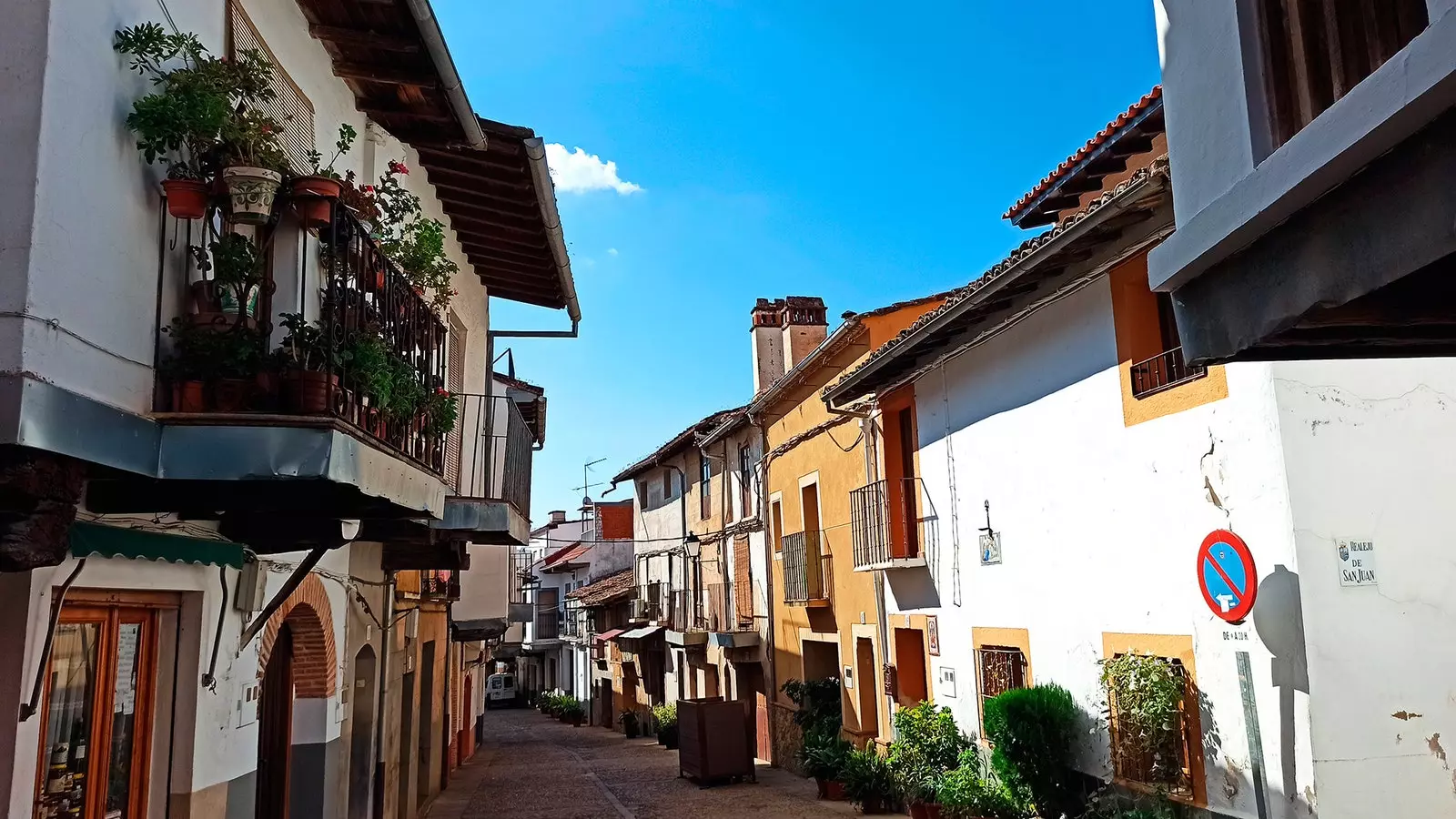
After the pilgrimage, it will be necessary to reserve strength to walk through the beautiful streets of Guadalupe
At midnight we leave from La Torreta, the repeater in the port itself (807 meters) next to the interprovincial border. There, introducing us to the municipality of Alía (around kilometer 104 of the EX-102), we will have the option of starting the walk along the road (always going along the left shoulder) or, if we prefer, by the Villuercas Nature Trail (more rugged, but where we will be stepping on land).
Both options will take us in a matter of hour and a half (7 kilometers downhill) to the place where the Guadarranque and Guadarranquejo rivers converge, where we will find a bucolic recreational area with picnic areas next to the old stone bridge.
This is the ideal place to have a snack before starting to walk uphill. Or, if we prefer, we can wait a few more kilometers until the Strait of the Peña Amarilla, the step that allows save the peaks of the Sierra Palomera. Beautiful gorge that owes its name to the lichens that cover its rocks and from whose viewpoints we can appreciate, if the light allows it, the numerous vultures that nest there.
Shortly after we will leave a rural house on our left. To get to kilometer 91 of the highway it will come out on the right hand side the advisable shortcut that leads to Alía (kilometer 85). This is the only town we'll pass through before reaching our destination.
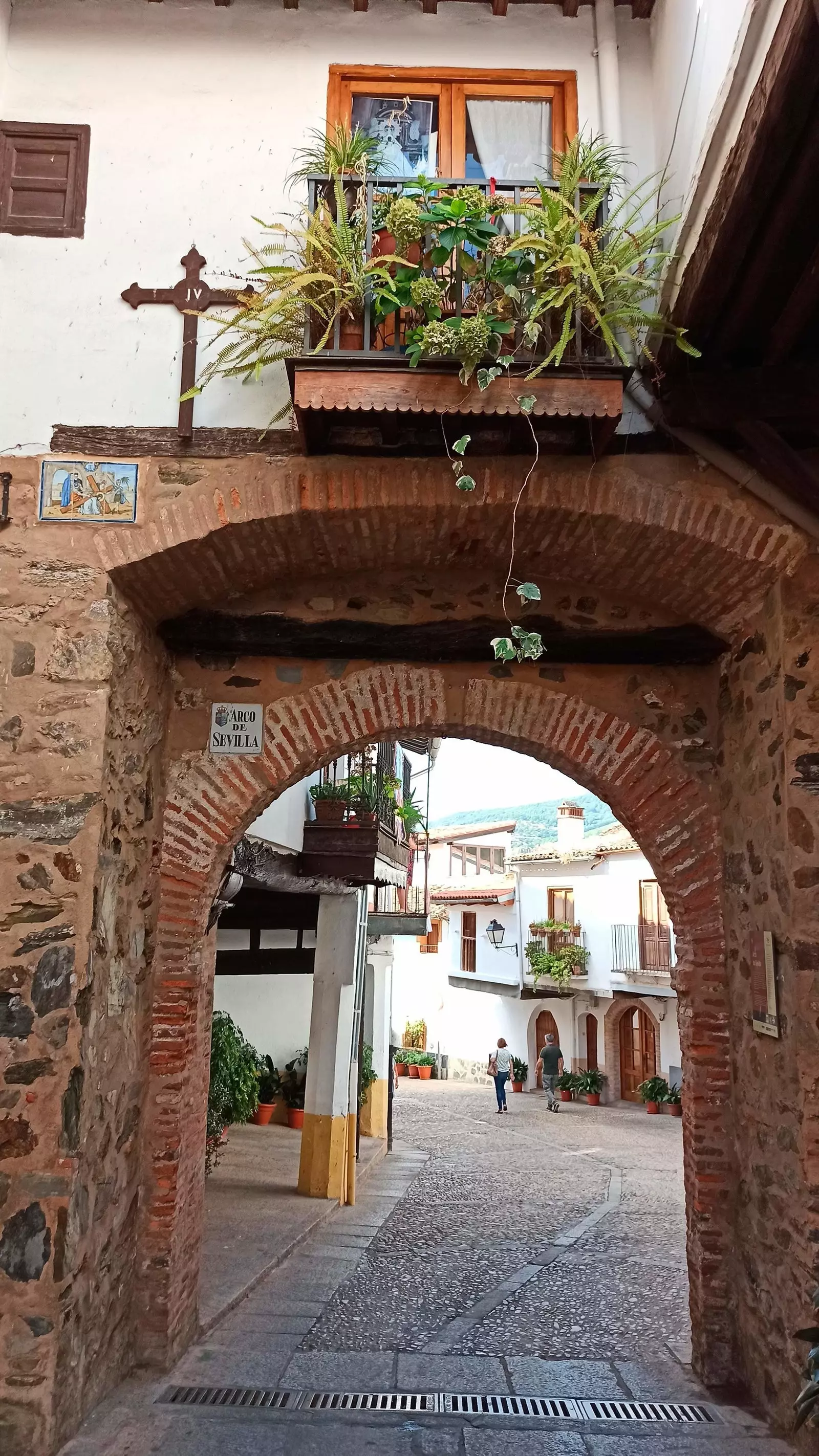
Through the streets of Guadalupe, towards the impressive monastery
depending on the hours, we can find its open bars at the foot of the road. In any case, it will always be available the source of drinking water to refill our canteens. Leaving its urban area, we take another shortcut that runs to the left of the road and that will take us to the Hermitage-Templete de la Concepción, the Marian altar that is at kilometer 82.
From here we continue along the road to the end. The curve at kilometer 72 will give us courage, as it will give us a panoramic view of Guadalupe illuminated by its night lights from afar. Shortly after crossing the creek of Guadalupejo we will have reached the outskirts, but the worst will remain: make the climb which comes out on the right hand side at the roundabout with the accumulated fatigue of the whole night. We will then understand the letter of the popular jack: "Virgin of Guadalupe, give me your hand, to climb the slope of Puertollano".
A few more minutes and we will have completed the route, which will be rewarded with the views of the impressive viaduct and the pretty streets with balcony houses of the town.
However, the jewel in the crown is the Monastery, whose front facade we will see when arriving at the Plaza de Santa Maria de Guadalupe (in whose fountain we can refresh ourselves and drink water). We will appreciate the number of styles with which both its exterior and its interior have been bathed since the Middle Ages: Mudejar, Baroque, Renaissance, Gothic, Neoclassical...
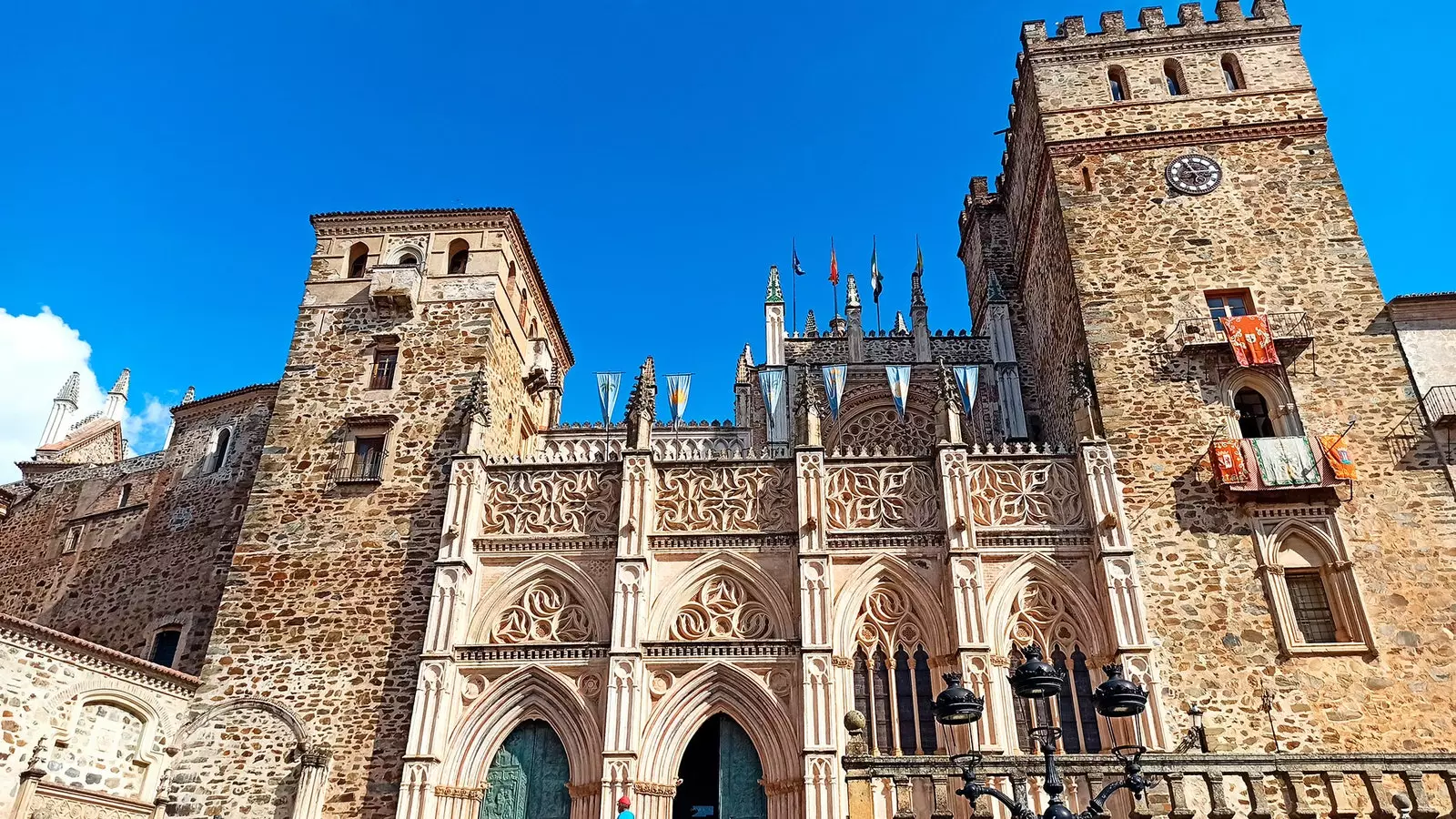
We will appreciate the number of styles with which both its exterior and its interior have been bathed
The visit to the church is free and, in addition to a Stations of the Cross, a gigantic organ and various baptismal fonts, we will be able to observe the highly ornate main altar with the Virgin of Guadalupe in the center. Is Virgin Brunette she can be facing or facing away, since she rotates depending on the day and time to be kissed by the faithful who decide to take the guided tour inside the Monastery.
If we have the strength to the guided tour (5 euros) , is done from the door on the right as you leave the main door of the church. We can also visit other places of interest in the town such as the Parador, the giant Nativity scene in a private house or the Arch of Seville, that will take us through the arcaded houses to the Fuente de los Tres Chorros.
In any case, his is culminate the excursion with a good breakfast. For this we turn to the Churrería El Abuelo, open from 6:15 a.m. at the top of Gregorio López street, full of bars, restaurants and souvenir shops.
One more climb, but the last one, since next to it, next to the town hall, is the marquee to catch the bus that Tuesday, Thursday, Friday and Saturday will take us back to Puerto de San Vicente (or to Madrid's South Station) at 8:55 a.m. (unless they are patron saint festivities, in which case they move their stop to the outskirts of town).
If we manage not to fall asleep on the way back, We will see with the light of day the idyllic landscapes of the Villuercas-Ibores-Jara Geopark that we have traveled on foot throughout a magical night.
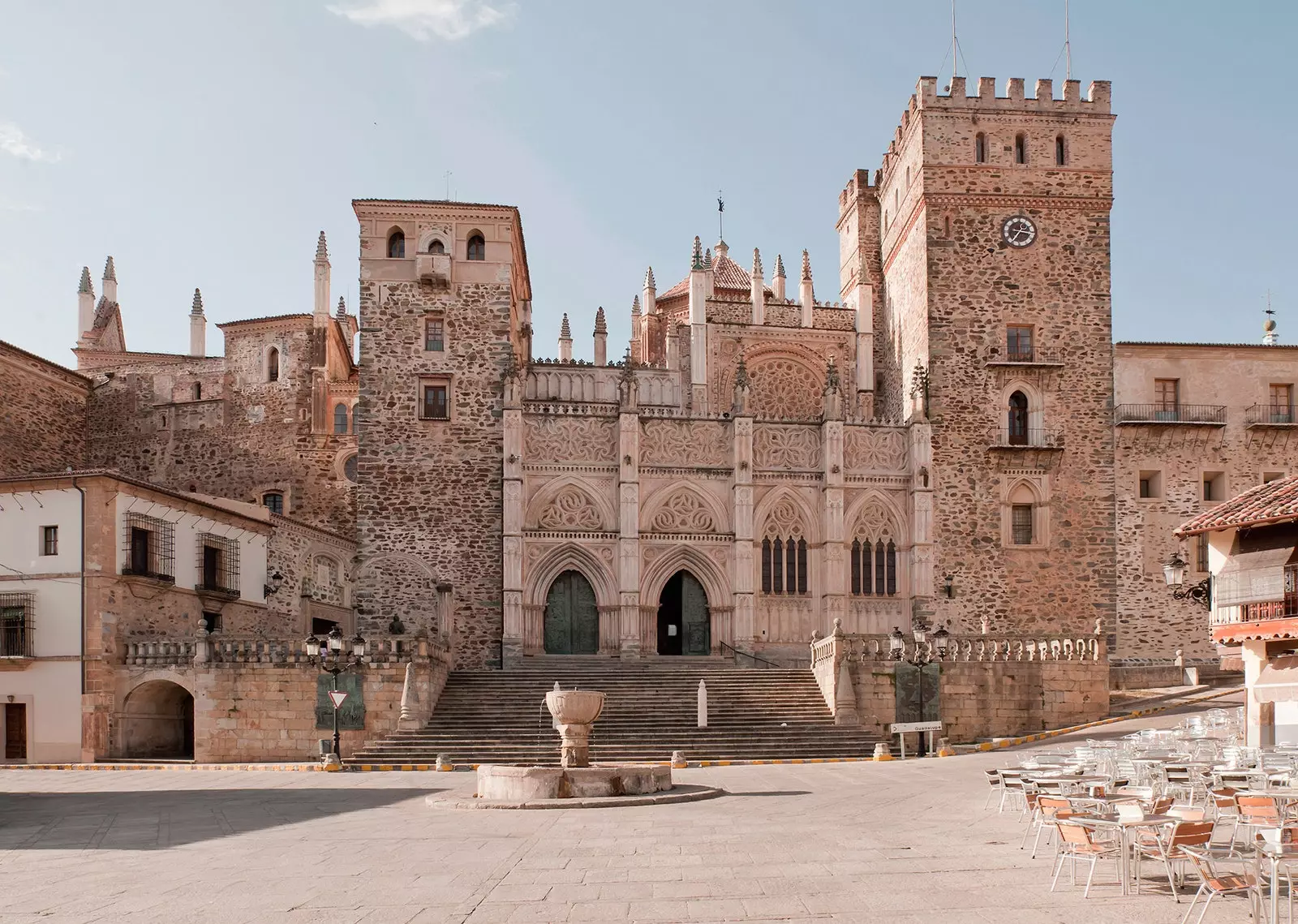
The visit to the church is free
